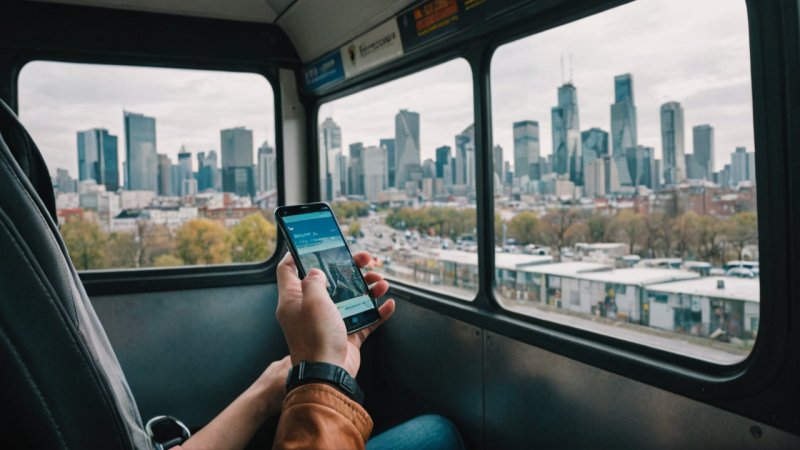In our fast-paced world, staying connected while on the move is more important than ever, especially when using public transport. This article will guide you through practical steps to ensure you have reliable internet access and communication capabilities during your travels. From choosing the right technology to understanding local connectivity options, you'll learn how to navigate public transport without losing touch.
Step 1: Choose the Right Mobile Plan
Before you embark on your journey, it's crucial to assess your mobile plan. Here’s how:
- Check International Roaming: Contact your mobile provider to see if they offer international roaming options that suit your travel needs.
- Consider a Local SIM Card: If you’re traveling for an extended period, purchasing a local SIM card upon arrival can be economical.
- Explore eSIM Options: Many modern smartphones support eSIM technology, allowing you to download a local plan without needing a physical SIM card.
Step 2: Download Offline Maps and Apps
Having access to maps and essential apps can ease your transit experience. Here’s how to prepare:
- Use Google Maps: Before your trip, download the offline map of your destination. This will allow you to navigate even without internet access.
- Install Local Transport Apps: Many cities have specific transport apps that provide real-time updates and schedules. Download these before you travel.
- Save Important Contacts: Make sure to save contact information for your accommodation and any local services you might need.
Step 3: Utilize Wi-Fi Hotspots
Wi-Fi hotspots can be a lifesaver when using public transport. Follow these steps to find and use them:
- Research Public Wi-Fi: Before your journey, look up areas where free Wi-Fi is available, such as train stations, airports, and popular tourist spots.
- Download Wi-Fi Finder Apps: Use apps designed to locate free Wi-Fi hotspots nearby to stay connected on the go.
- Be Cautious: When using public Wi-Fi, ensure you protect your personal information by using a VPN and avoiding sensitive transactions.
Step 4: Carry a Portable Charger
Staying connected requires power. Here’s how to ensure your devices don’t run out of battery:
- Choose the Right Charger: Invest in a high-capacity portable charger that can charge your devices multiple times.
- Keep Your Devices Charged: Charge your phone and other devices fully before starting your journey.
- Charge on the Go: Use your portable charger during your commute to ensure you have enough battery for the day ahead.
Step 5: Consider a Mobile Hotspot Device
If you need continuous internet access, a mobile hotspot can be beneficial. Here’s what to consider:
- Rent or Purchase a Hotspot: Many airports and rental services offer mobile hotspot devices that provide internet access for multiple devices.
- Check Coverage Areas: Ensure that the mobile hotspot you choose has coverage in the areas you plan to visit.
- Understand Data Limits: Be aware of any data limits to avoid excessive charges or throttling.
Step 6: Stay Informed About Local Transport Updates
Being aware of local transport updates can enhance your travel experience. Here’s how to stay informed:
- Follow Local Transport Authorities: Many cities have social media accounts or apps that provide real-time updates on public transport.
- Join Travel Forums: Engage with travel communities online to gather insights and tips about public transport in your destination.
- Set Alerts: Use apps to set alerts for any changes in public transport schedules that may affect your travel plans.
Step 7: Embrace Alternative Communication Methods
In case of connectivity issues, having alternative communication methods can be handy:
- Use Messaging Apps: Apps like WhatsApp or Telegram can work on Wi-Fi, allowing you to communicate without using cellular data.
- Share Itineraries: Share your travel plans with friends or family before you leave, so they know your whereabouts even if you lose connectivity.
- Carry a Power Bank: Having a secondary source of power can ensure your communication devices remain charged.
Staying connected while using public transport doesn’t have to be stressful. By following these steps, you can ensure you have reliable access to the internet and communication tools throughout your travels. Remember to choose the right mobile plan, download essential apps, utilize available Wi-Fi hotspots, and always have a backup power source. With these tips, you can navigate public transport seamlessly while staying in touch with the world.






